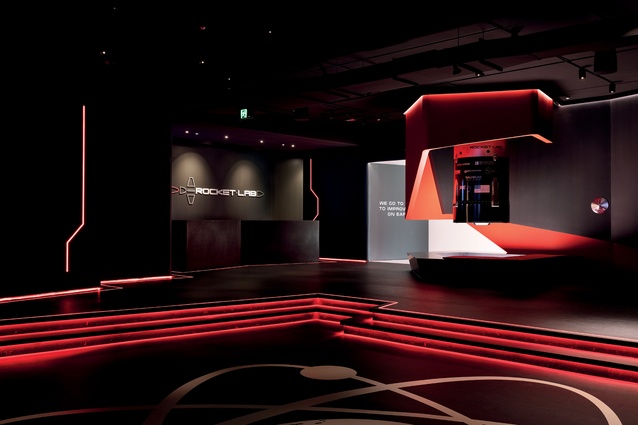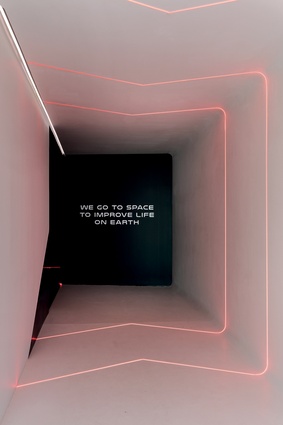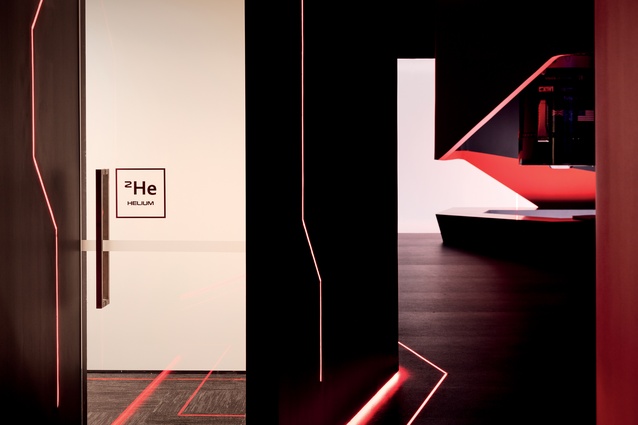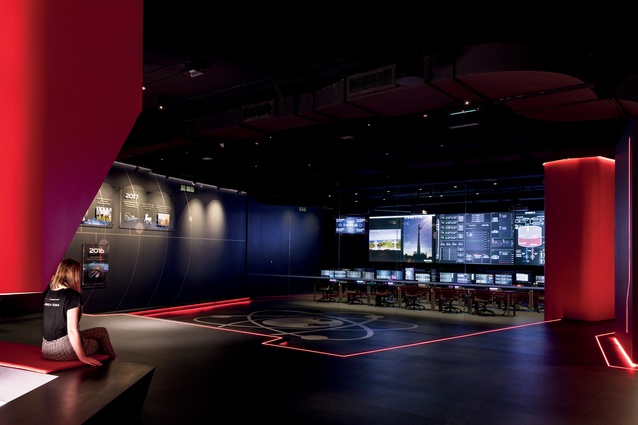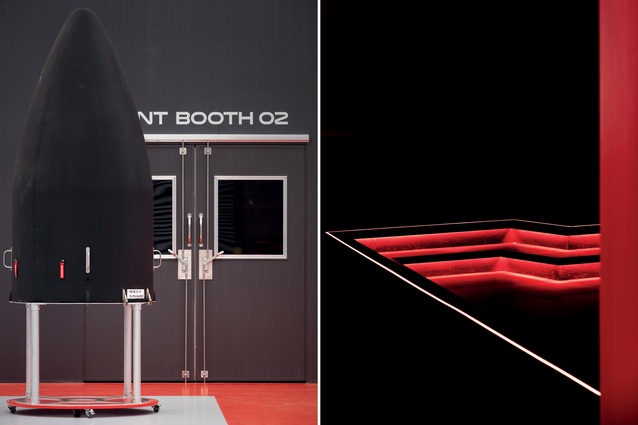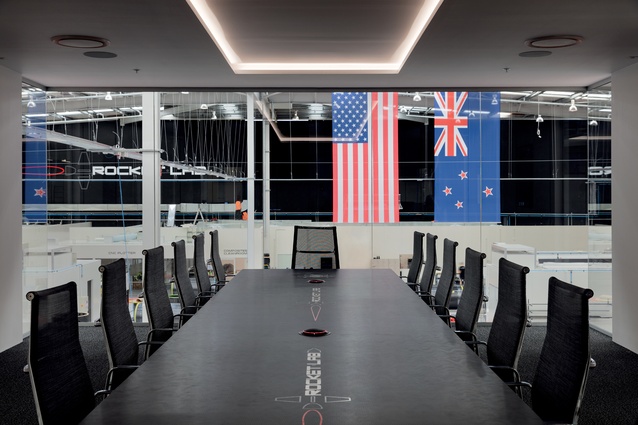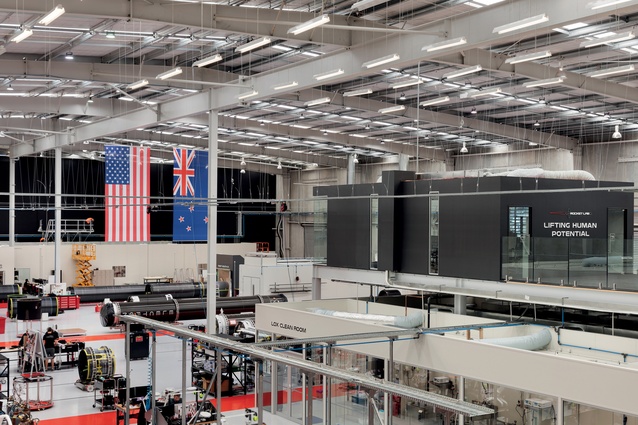Ground control: Rocket Lab
Rocket Lab’s new Auckland headquarters boasts a good dollop of theatre, science fiction and the very serious business of sending satellites into space. We set out to discover how its interior design copes with the very unique brief.
“Open the pod bay doors, Hal”. So goes one of the most famous lines in cinema, when HAL 9000, the sentient computer in 2001: A Space Odyssey, has gone rogue. I hear the line when I walk through the portal into Rocket Lab’s brand-new head office.
It’s no surprise to find out that Rocket Lab chief executive Peter Beck is a fan of the Stanley Kubrick movie and science fiction in general. Rocket Lab’s new facilities in Mount Wellington, Auckland, were opened by none other than Star Trek’s William Shatner.
As part of the New Zealand/American company’s plan for aerospace dominance in the delivery of small satellites into low Earth orbit, a new rocket-building factory, together with research and development facilities and a mission control, was required. The architects at Designgroup Stapleton Elliott (DGSE) were tasked with designing a new aspirational front where the public could watch the mission control in action during launches at Rocket Lab’s Māhia Peninsula launch pad and other venues planned for the US.
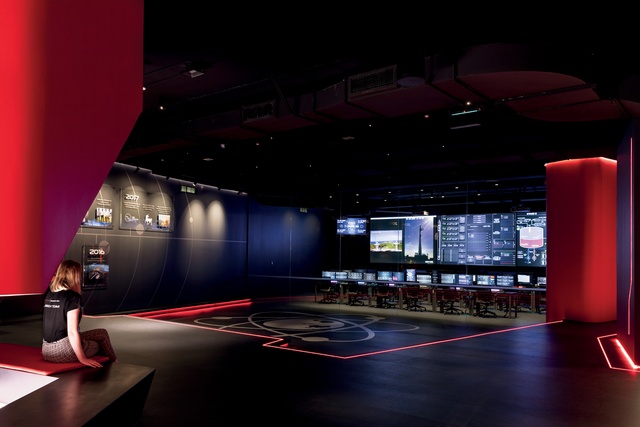
A love of science fiction was common ground and the basis of a strong collaboration between the client and the architect. One of the vital tenets of good science fiction is to craft a new world in which your audience can immerse itself. The brief challenged the designers to create a fit-out that changed the state of the visitor upon arrival.
A transformative moment is achieved when you enter what the architects call the portal: a reference that conjures up visions of using a doorway to transport you magically from one world to another. “Rocket Lab wanted the visitor to detach from the past or where they have come from and so we created a portal that narrows, distorts and rises as you enter,” says Michael Ware, who, with project director Nigel Dong (both from DGSE) formed the core design team.
Kubrick loved a good hallway to shoot in one-point perspective and the Rocket Lab portal entry provides a worthy one. The floor and ceiling are made of a seamless white Acrylic Solid Surface material to create a continuous surface with rounded edges and recessed LED strip lights. Glowing in the darkness is Rocket Lab’s inspirational motto, ‘We go to space to improve life on Earth’, which sounds better than the average punter’s mantra just to get through the day.
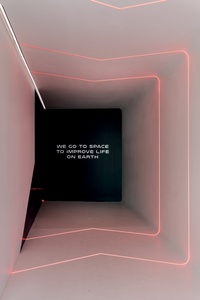
Once inside the viewing gallery, you are plunged into darkness, with just the light of radiant red LED strip lights and giant infographic screens of mission control. “There are no windows when you enter; the idea is to connect people entering the space with mission control and to the people controlling the rocket,” says Dong.
The buzz during a launch must be something else. You half expect the buzz-cut, vest-wearing flight director Gene Kranz to pop out of the shadows (actor Ed Harris portrayed Kranz in the film Apollo 13). The ramped floor at the entry allows for a sunken viewing area looking into the mission control room.
A ribbon of red light strips lines the skirtings and stair risers, and wraps around the room to embrace the mission control. The ribbon culminates in what the architects call ‘the Oculus,’ which holds a suspended rocket nozzle. The rocket on show is the ‘Electron’ – the expendable launch vehicle developed by Rocket Lab.
There is a fair amount of theatre going on here and you can understand why. Public relations is a large part of the hype of a rocket company. The break between theatre and the realities of rocket-building is cleverly brought into contrast in the boardroom which looks over the production floor.
The immaculately clean factory is less fiction and more science, with cells for assembly and giant 3D metal printers – big tech stuff being made. The factory floor provides a stunning backdrop to the business boardroom where giant New Zealand and United States flags leave no doubt about the collaborative nature of this endeavour.
Just as Kubrick obsessed over set design details to sell the illusion of antigravity, the designers – both architects and rocket-makers – have created an immersive fit-out that portrays a seamless world that has overcome gravity.
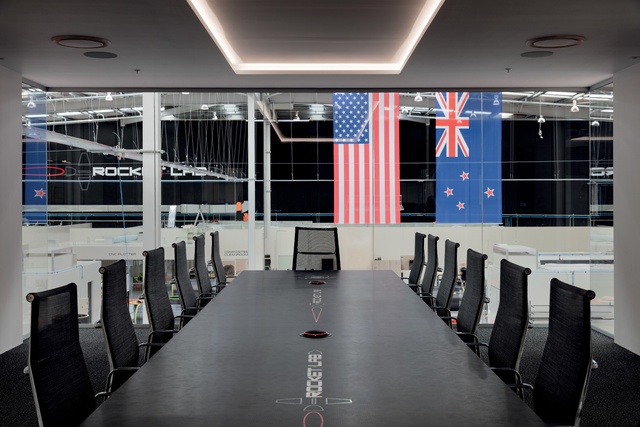
In Focus
Words by: Rocket Lab and Designgroup Stapleton Elliott
What was your brief?
The original brief comprised of a new facility made up of three parts, the creation of a new reception zone to showcase everything Rocket Lab is about, from high end design to creating a bespoke product to deliver the specific requirements for each small satellite launch clients.
The second zone was to support Rocket Lab’s most important asset – their people. This zone would be more than just office space – rather it was about creating a workplace environment to enhance connectivity and creativity.
The third zone was the production incubator – a high-end rocket factory where ideas were to be transformed into reality and constructed to the highest international standards. Designgroup Stapleton Elliott (DGSE) worked in close partnership with Rocket Lab for the first zone, with the second and third zones primarily designed and managed internally by Rocket Lab.
Mission Control would be the nerve centre of the operation for Rocket Lab’s launch sites around the world. Mission Control and its surroundings called for a dynamic space for staff and visitors to be transported into the exciting future of space exploration, opportunity and discovery.
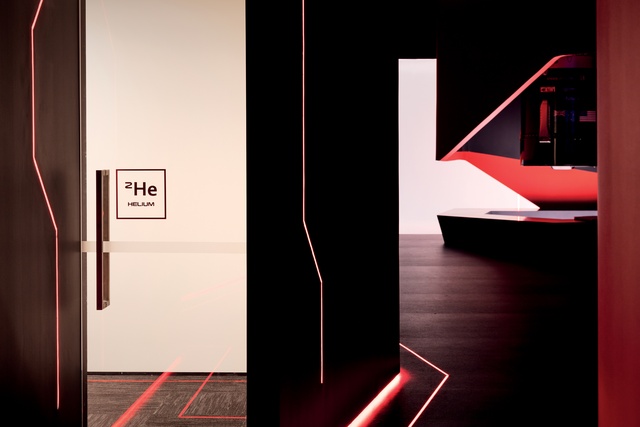
How does this design relate to those of Rocket Lab’s other buildings?
Rocket Lab’s Auckland Production Complex now serves as the basis for the overall look when it comes to the building and work area aesthetic. Rocket Lab has already begun the process of rolling out elements of this aesthetic across their other facilities, specifically, their Huntington Beach Headquarters and Launch Complex 1 in Māhia.
There is a real sense of theatre and ‘wow’ here, what were your starting points/influences?
Early influences included, 2001: A Space Odyssey, both with its obvious space connection as well as it’s cinematography. Rocket Lab and DGSE investigated and developed experimental environments, challenging the notion of gravity by celebrating spatial fluidity where surface and embedded light in floors, walls and ceilings merge together to create a transformative environment.
Central to the design was the Oculus. It’s the visual pivot point of main space and is dramatically formed by spiralling angled walls rising from the entrance portal. A scale model Electron rocket was installed in the reception area, with the top of the rocket penetrating through the ceiling. The rocket installation creates a real ‘wow’ factor for visitors entering the facility.
This article first appeared in Interior magazine.


